Ethiopia, a land rich in history, culture, and natural beauty, is home to one of the most remarkable and awe-inspiring sites in the world—the rock-hewn churches of Lalibela. These ancient churches, carved entirely out of solid rock, are not only an architectural marvel but also a testament to the deep spiritual and religious traditions of Ethiopia. Located in the heart of the Ethiopian highlands, Lalibela is often referred to as the “New Jerusalem,” a place of pilgrimage and devotion for Ethiopian Orthodox Christians. In this article, we will explore the history, significance, and architectural brilliance of the rock-hewn churches of Lalibela, revealing why they are considered Ethiopia’s living wonders.
Table of Contents
Historical Background of Lalibela
The town of Lalibela, formerly known as Roha, is named after King Lalibela, who ruled Ethiopia during the late 12th and early 13th centuries. According to Ethiopian tradition, King Lalibela was divinely inspired to construct the churches after receiving visions of a “New Jerusalem.” These visions were said to come after the Muslim conquest of Jerusalem, which made pilgrimage to the holy city difficult for Ethiopian Christians. As a result, King Lalibela sought to create a new spiritual center in his own kingdom, one that would replicate the holy sites of Jerusalem and serve as a new destination for pilgrims.
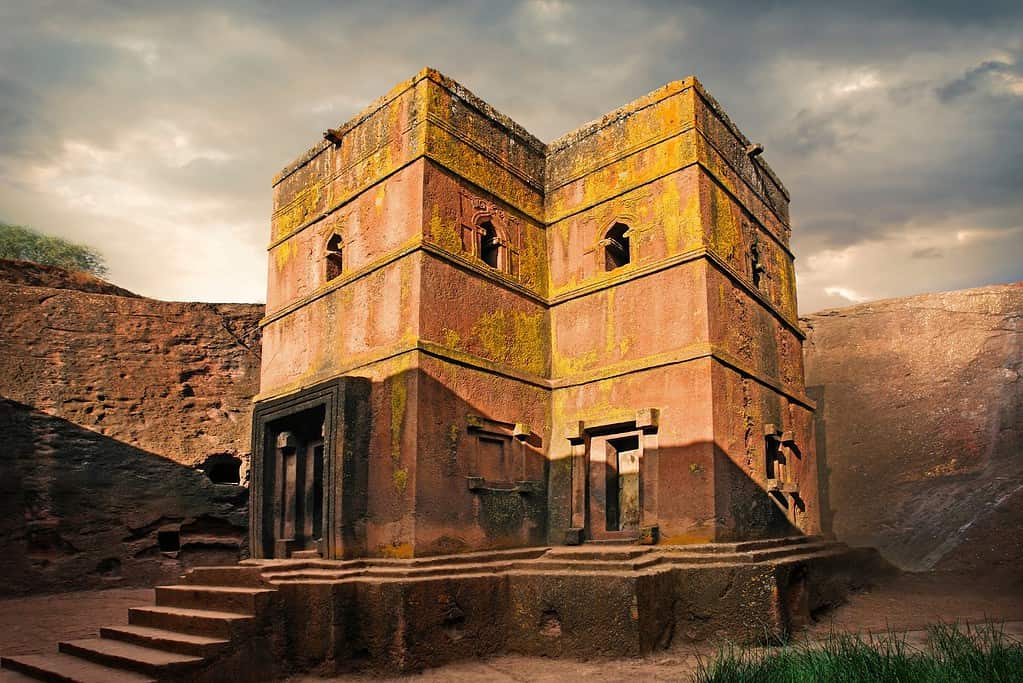
The construction of the churches is believed to have taken place over a span of 24 years. Legend has it that angels assisted in the construction, working alongside the human laborers to complete the churches at an astonishing pace. While the exact timeline and methods of construction remain shrouded in mystery, what is clear is that the rock-hewn churches of Lalibela are a monumental achievement, representing the zenith of Ethiopian rock-cut architecture.
The Significance of the Rock-Hewn Churches
The rock-hewn churches of Lalibela are not just architectural wonders; they are also deeply significant in the religious and cultural life of Ethiopia. The churches are still active places of worship, where priests and monks conduct daily services, and where pilgrims come to seek spiritual solace. The churches are also a UNESCO World Heritage site, recognized for their historical, cultural, and religious importance.
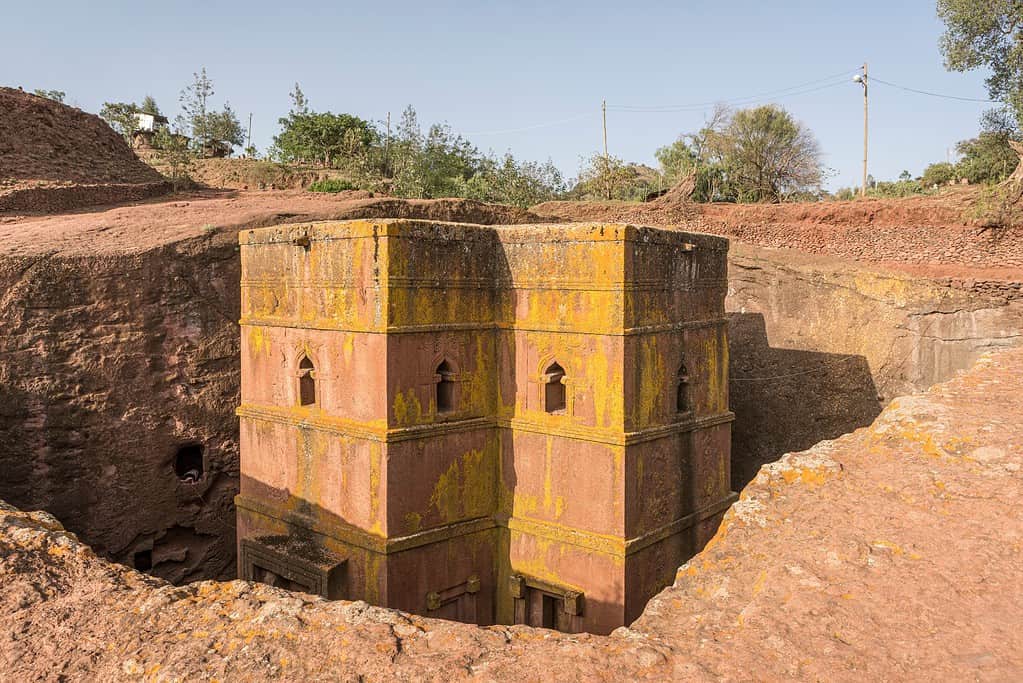
The layout of the churches is said to represent a symbolic connection to Jerusalem, with many of the structures named after biblical sites. For example, one of the most famous churches, Biete Medhane Alem (House of the Savior of the World), is thought to be a symbolic representation of the Church of St. Mary of Zion in Aksum. The network of churches is also connected by a series of tunnels and walkways, further enhancing the sense of a sacred and unified space.
Architectural Marvels of Lalibela
The rock-hewn churches of Lalibela are divided into two main groups, each representing different aspects of Christian symbolism. The Northern Group consists of six churches, including Biete Medhane Alem, Biete Maryam (House of Mary), and Biete Golgotha Mikael. The Southern Group includes four churches, such as Biete Amanuel (House of Emmanuel), Biete Qeddus Mercoreus (House of St. Mercurius), and Biete Abba Libanos. In addition to these, there is the isolated church of Biete Ghiorgis (House of St. George), which is perhaps the most iconic and visually stunning of all the Lalibela churches.
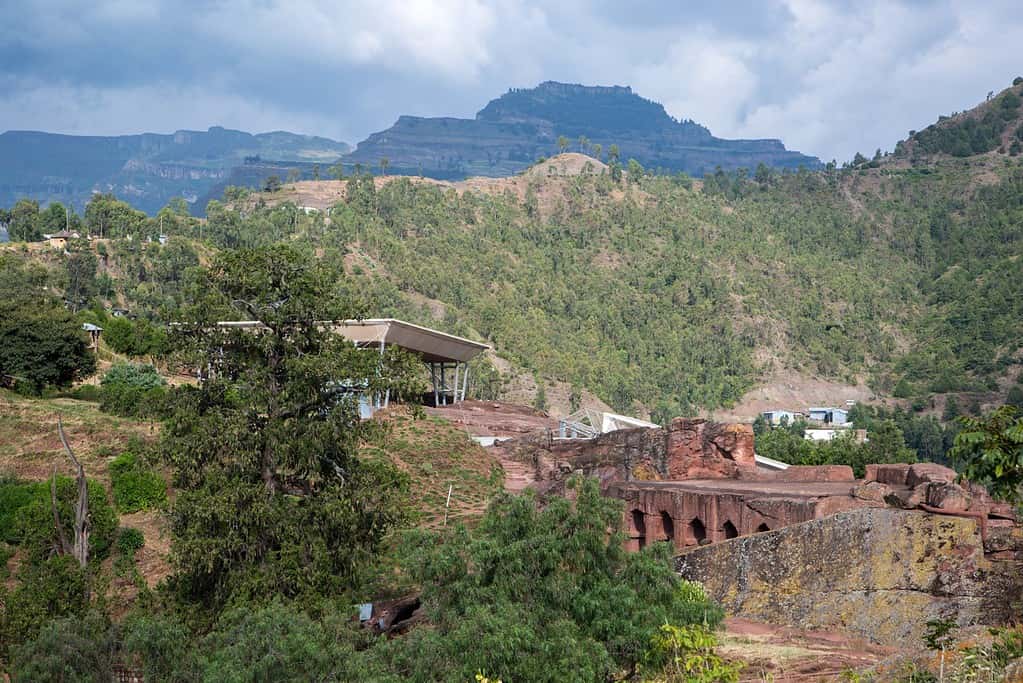
Biete Medhane Alem: This is the largest monolithic church in the world and is thought to be a symbolic replica of the original St. Mary’s Church of Zion in Aksum. The church’s massive size and columned halls evoke a sense of grandeur, and it houses the Lalibela Cross, a sacred artifact of the Ethiopian Orthodox Church.
Biete Maryam: Believed to be the oldest of the Lalibela churches, Biete Maryam is dedicated to the Virgin Mary and features beautifully carved frescoes and intricate designs. The church’s interior is adorned with depictions of biblical scenes, and it is considered one of the most spiritually significant churches in Lalibela.
Biete Ghiorgis: The most famous of the Lalibela churches, Biete Ghiorgis is dedicated to St. George, the patron saint of Ethiopia. The church is carved in the shape of a cross and is situated in a deep pit, accessible only by a narrow passage. The exterior of the church is remarkably well-preserved, and its cross-shaped design is a symbol of Christian faith.
Biete Amanuel: This church is part of the Southern Group and is believed to have served as the royal chapel. Biete Amanuel is notable for its precise and refined architectural details, which suggest that it may have been intended for use by the royal family.
Biete Abba Libanos: According to tradition, this church was built by King Lalibela’s wife, Queen Masqal Kebra. It is unique in that it is partially separated from the surrounding rock, giving it the appearance of a structure that was pulled out of the earth.
The Spiritual and Cultural Impact of Lalibela
The churches of Lalibela have played a central role in the spiritual life of Ethiopia for centuries. They are not only places of worship but also centers of religious learning, where priests and scholars study ancient manuscripts and teach the next generation of Ethiopian Orthodox Christians. The churches are also the focal point of major religious festivals, such as Genna (Ethiopian Christmas) and Timkat (Epiphany), during which thousands of pilgrims flock to Lalibela to participate in the celebrations.
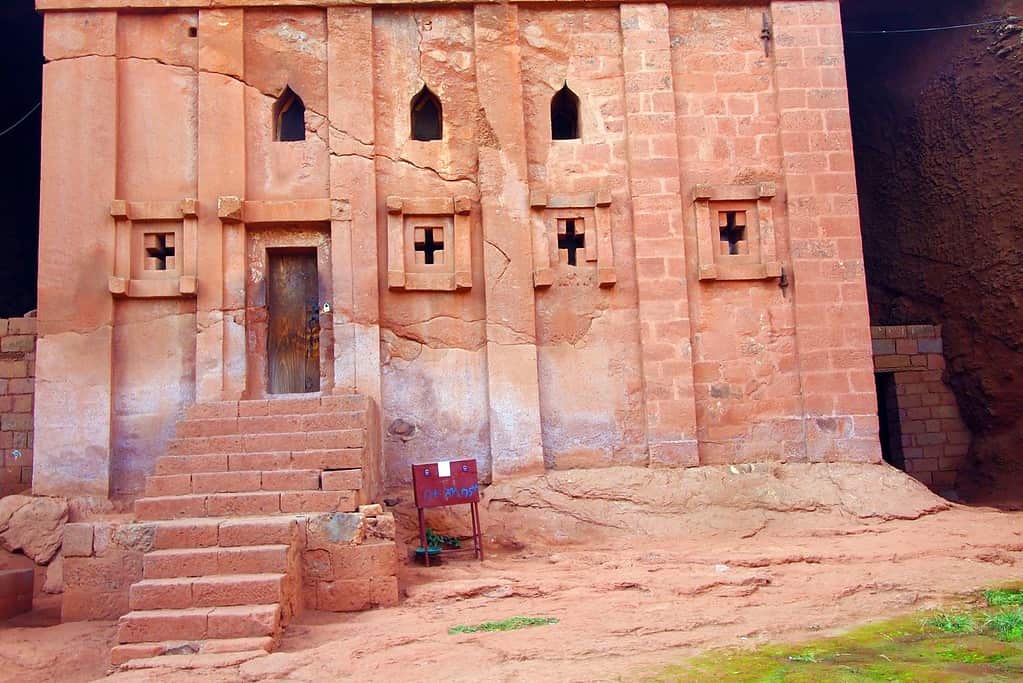
For the Ethiopian people, Lalibela represents a deep connection to their religious heritage and cultural identity. The churches are a symbol of Ethiopia’s long-standing Christian tradition, which dates back to the 4th century AD when Christianity was first introduced to the country. This tradition has endured through centuries of change, and the rock-hewn churches of Lalibela stand as a testament to the resilience and devotion of the Ethiopian Christian community.
Visiting the Rock-Hewn Churches
For travelers, a visit to Lalibela is a journey back in time, offering a glimpse into a world where faith and artistry are intertwined. The town of Lalibela is accessible by air from Addis Ababa, the capital of Ethiopia, or by road, although the journey can be long and challenging. Once in Lalibela, visitors can explore the churches at their own pace or with the guidance of a knowledgeable local guide who can provide insights into the history and significance of each site.
The best time to visit Lalibela is during the religious festivals, when the town comes alive with processions, music, and traditional ceremonies. However, visitors should be prepared for large crowds and the intense devotion of the pilgrims, which can be both overwhelming and deeply moving.
Preservation and Challenges
The rock-hewn churches of Lalibela have stood the test of time, but they are not immune to the challenges of preservation. Natural erosion, climate change, and the growing number of visitors have all taken their toll on these ancient structures. Efforts are being made to preserve the churches, including the installation of protective shelters and the establishment of conservation programs. However, the balance between preservation and maintaining the churches as living religious sites remains delicate.
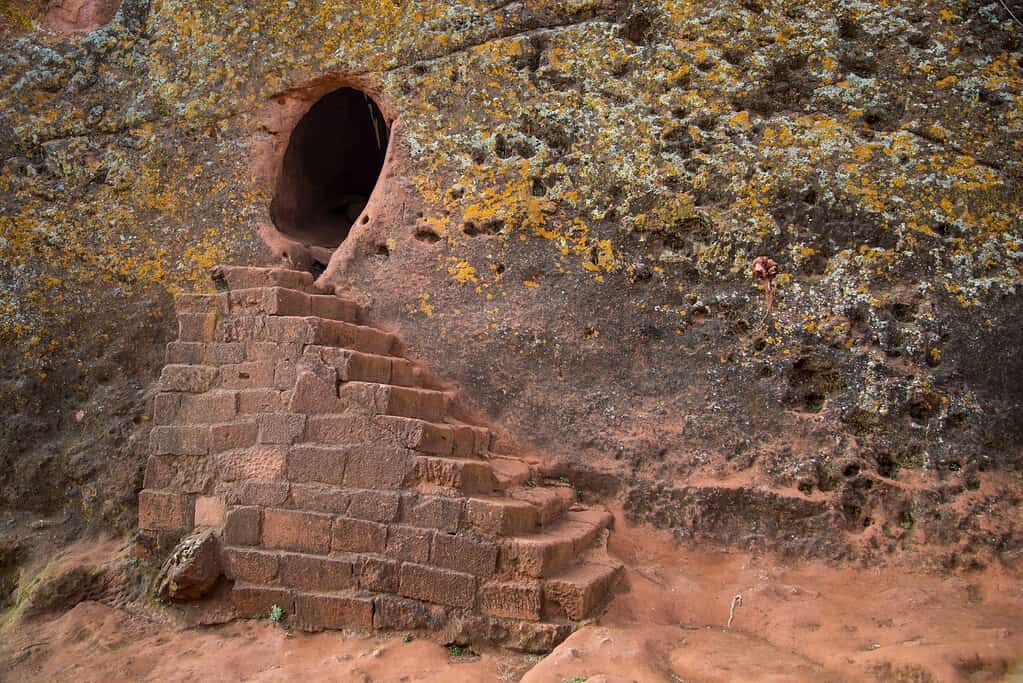
The Ethiopian government, along with international organizations such as UNESCO, is working to ensure that the churches of Lalibela remain intact for future generations. This includes not only physical preservation but also supporting the local community, which plays a vital role in the ongoing care and maintenance of the churches.
Conclusion
The rock-hewn churches of Lalibela are more than just historical monuments; they are living symbols of Ethiopia’s rich spiritual and cultural heritage. Carved from solid rock, these churches are a testament to the faith, ingenuity, and devotion of the Ethiopian people. For those who visit Lalibela, the experience is one of awe and reverence, a journey into the heart of Ethiopia’s Christian tradition. Whether you are drawn by the architectural marvels, the spiritual significance, or the unique history of Lalibela, the churches of this ancient town offer a profound and unforgettable experience.
Read the Ethiopia article here.
